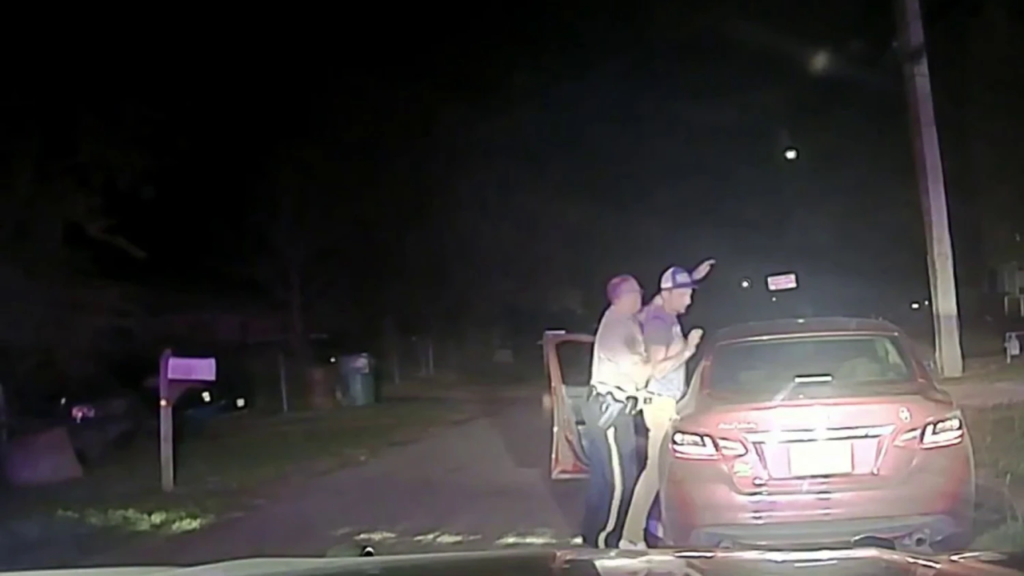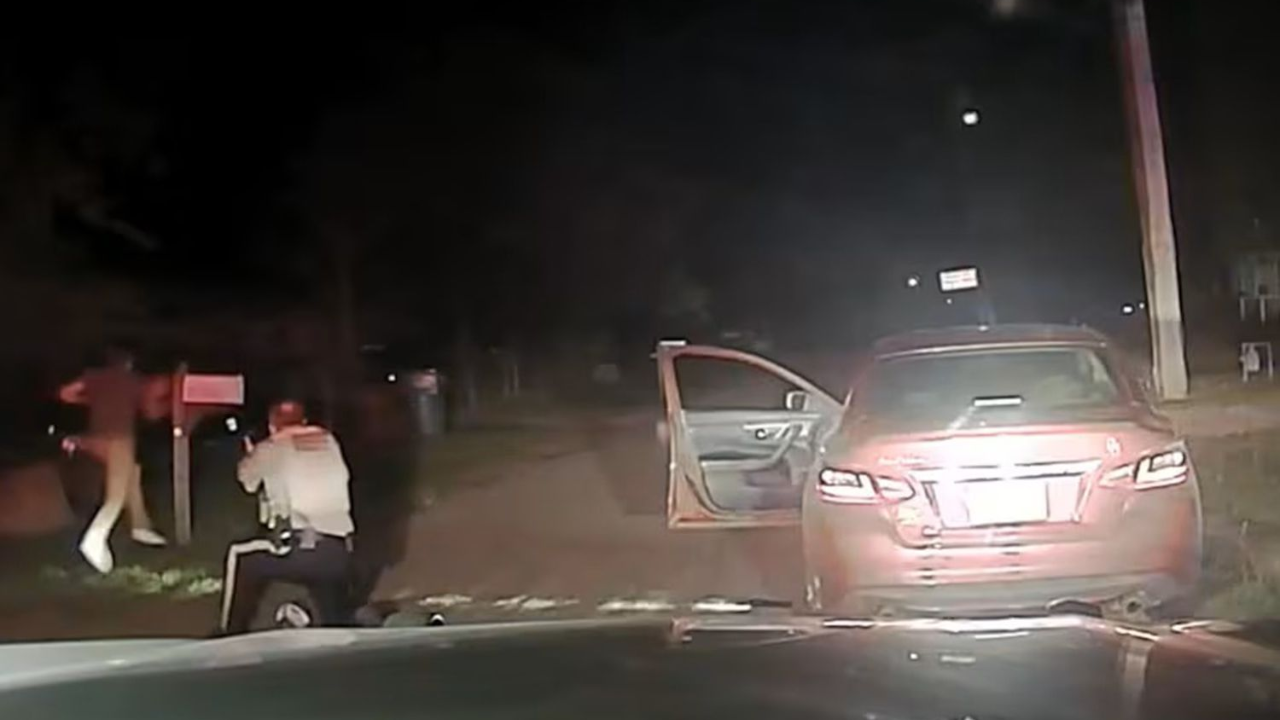In a troubling incident that has drawn widespread attention, a former deputy with the Rusk County Sheriff’s Office in Texas is facing renewed scrutiny after fatally shooting an unarmed man during a traffic stop. The deadly encounter, which took place in September 2022, was captured on dashcam footage and released in April 2025, sparking outrage and calls for greater accountability in law enforcement practices.
The Incident: What Happened During the Traffic Stop?
On the afternoon of September 15, 2022, Timothy Michael Randall, a 29-year-old man from Tyler, Texas, was stopped by law enforcement officers in the rural community of Turnertown. According to reports, the stop was initiated by a routine traffic violation. However, the situation quickly escalated after Randall exited his vehicle in response to commands from the deputies on the scene.
Randall, who was unarmed, repeatedly assured the officers that he had no weapons, according to his mother, Wendy Tippett, who has since filed a federal lawsuit. The dashcam footage from the patrol car shows Randall making these statements while complying with the officers’ instructions.
Despite Randall’s efforts to cooperate, the situation took a violent turn when Deputy Shane Iversen, who was at the scene, engaged in a physical altercation with Randall. The two men wrestled briefly on the ground before Randall attempted to flee. As he was in the process of fleeing, Iversen fired a shot that struck Randall in the chest. He died at the scene.
The Aftermath: A Disturbing Remark
Immediately after shooting Randall, Deputy Iversen made a chilling remark to a fellow officer, captured in the dashcam footage. “I just smoked a dude,” Iversen said. The phrase “smoked” is a slang term used to describe shooting someone, and it underscored the disturbing nature of the interaction. This comment, combined with the fatal shooting of an unarmed man, has fueled criticism of the deputy’s actions and raised serious questions about his use of force.
Lack of Accountability and the Legal Fallout
Following the incident, Deputy Iversen retired quietly from the Rusk County Sheriff’s Office. At the time of the shooting, there were no charges filed against him, and many believed the case would fade from the public eye. However, in January 2025, a federal judge ruled that Iversen could not claim qualified immunity—a legal protection that shields government officials from lawsuits in certain situations.
The ruling, issued by U.S. District Judge Robert W. Schroeder, stated that the officer’s actions were unjustified. The judge pointed out that Randall had made it clear that he was unarmed and posed no threat to the officers. Furthermore, the judge emphasized that there was insufficient warning before the shooting occurred. This decision cleared the way for Randall’s family to pursue a civil lawsuit against Deputy Iversen.
The legal battle is ongoing, and the case has brought renewed attention to the issue of police use of force, especially in situations involving unarmed individuals. In the wake of the ruling, many are calling for greater transparency and accountability within police departments, as well as stronger safeguards against the unjust use of deadly force.

The Role of Dashcam Footage in Holding Law Enforcement Accountable
The release of the dashcam footage has been a pivotal moment in the case. In many police-involved shootings, body cameras or dashcam footage can serve as critical evidence in understanding what happened during an encounter. In this case, the footage clearly shows Randall’s attempts to cooperate with law enforcement, as well as the moments leading up to the fatal shooting. It also captures Deputy Iversen’s disturbing remark, which has only added to the outcry surrounding the incident.
Dashcam and body-worn cameras have become central tools in efforts to increase transparency in law enforcement. According to the Bureau of Justice Statistics, nearly 95% of law enforcement agencies in the U.S. use some form of body-worn camera technology or dashcams. These tools are seen as a way to document interactions between officers and the public, especially in high-stakes situations such as traffic stops and arrests.
For more information on body-worn cameras and their use in law enforcement, visit the U.S. Department of Justice’s Bureau of Justice Statistics.
Public Outcry and Calls for Change
The case of Timothy Randall has sparked significant public outcry, particularly among civil rights activists and advocates for police reform. Randall’s mother, Wendy Tippett, has expressed her frustration with the lack of accountability surrounding the incident and has vowed to continue seeking justice for her son.
“This is a fight for accountability, and we will not stop until Deputy Iversen is held responsible for his actions,” Tippett said in a statement after the footage was released.
In response to the incident, several organizations, including the American Civil Liberties Union (ACLU) and local civil rights groups, have called for stronger oversight of law enforcement agencies and for measures to reduce the use of deadly force in situations that do not pose an immediate threat to officers. The incident also highlights ongoing concerns about racial disparities in police interactions, with many pointing to the disproportionate number of Black and Brown individuals affected by such encounters.
For more information on police accountability and the fight for justice, visit the American Civil Liberties Union (ACLU).
Conclusion
The death of Timothy Randall has become a flashpoint in the ongoing national conversation about police use of force and the need for systemic reforms within law enforcement. While the legal process continues, this case underscores the importance of holding officers accountable for their actions and ensuring that deadly force is only used in situations where it is absolutely necessary.
As the case progresses, many hope that it will serve as a catalyst for broader changes in law enforcement practices, ensuring that officers are held to the highest standards of accountability and that communities are protected from unnecessary violence. The fight for justice in this case is far from over, and it remains to be seen whether Deputy Iversen will face legal consequences for his actions.

Pankaj Kumar is a skilled content writer at OTE News, focusing on breaking news, technology, and socio-political developments. With a background in Mass Communication, he brings a balanced perspective to his articles, ensuring clarity and reliability. Pankaj has a knack for simplifying complex topics for readers.
In his free time, he enjoys photography, traveling, and experimenting with new cuisines. His curiosity and dedication to truthful reporting make him a valuable contributor to OTE News.



